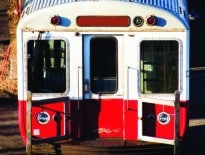Greater Boston got some great news at the end of January when state officials announced that nearly all of the 175 towns and cities served by the MBTA have taken a first, basic step to comply with Massachusetts’ new transit-oriented zoning law.
That shows, even without the threat of legal action, most leaders in eastern Massachusetts know that opening their communities up to multifamily development isn’t optional.
And that threat of legal action is very real, despite most of the media narrative’s focus on the law’s financial sanctions. It can come under the federal Fair Housing Act, which Lawyers for Civil Rights made plain last week they intend to hold over noncompliant suburbs, thanks to the very clearly racist outcomes that exclusionary zoning drives. It can also come via the state courts, which are plainly given the power to compel compliance with the MBTA Communities reforms thanks to the law’s directive that municipalities “shall have” at least one zoning district that allows by-right multifamily development.
But we hope that the 168 compliant towns aren’t being motivated by this stick. Instead, elected leaders, town meeting members and ordinary voters should turn their faces to the glorious vibrancy that denser development can bring to their communities.
Adding big chunks of multifamily housing to town centers creates a built-in customer base who will reliably support local shops and restaurants. It also eats up unsightly parking lots that ruin the experience of strolling through these business nodes, and the additional tax revenue these buildings bring in can support better schools and beautification projects.
More neighbors make communities more fun, too. Multifamily housing can generate a critical mass of people needed to make street festivals and other celebrations successful. Why are the North End’s many saints’ days so vibrant? Because there are lots of people living nearby, of all ages, who can walk downstairs from their apartments and condominiums and take part instead of having to drive in and risk having to skip events because they need to find a place to park.
Speaking of parking, clustering multifamily housing near transit can help free us from the tyranny of the automobile and build a better transit system at the same time. While places like Toronto and Montreal show that excellent bus networks don’t need high density to attract large numbers of riders every day, dense nodes help build the political consensus necessary to improve transit. They also mean more people can walk and bike to work, shop or have fun most of the time, cutting down on the number of big, dangerous, expensive and inefficient cars clogging the streets.
And that’s to say nothing of the affordability benefits. If the high costs of the land and of construction can be spread across a greater number of units – made possible by using more of a lot or building envelope for stores and housing instead of car storage – the cheaper rents or home sale prices are going to be.
Do the right thing, Massachusetts. Zone for more fun.
Letters to the editor of 350 words or less may be submitted via email at editorial@thewarrengroup.com with the subject line “Letter to the Editor,” or mailed to the offices of The Warren Group. Submission is not a guarantee of publication.





